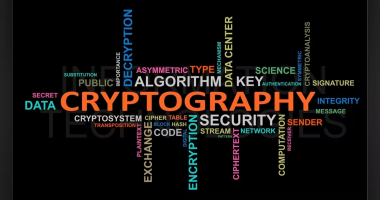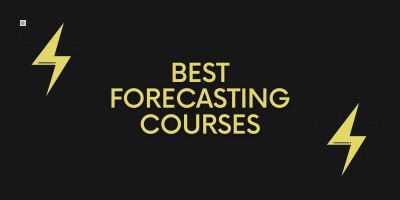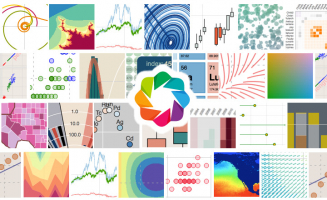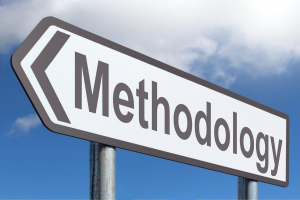Top 6 Best Online SPSS Courses
SPSS (Statistical Package for the Social Sciences), usually referred to as IBM SPSS Statistics, is a statistical data analysis software package. Although SPSS ... read more...is named after its original application in the social sciences, it has since moved into other data industries. SPSS is widely used in research in the fields of healthcare, marketing, and education. To help you gain more understanding and knowledge in this field, Toplist has compiled the top best SPSS courses, hoping to help learners choose the right courses for themselves.
-
Learners will be exposed to statistics in this course, including where data comes from, research design, data management, and data exploration and visualization. Learners will recognize various forms of data and will be able to visualize, analyze, and comprehend univariate and multivariate data summaries. Learners will also be introduced to the differences between probability and non-probability sampling from bigger populations, the concept of sample estimates, and how probability sampling may be used to make inferences about larger populations.
Learners will use the statistical ideas they've learnt in Python within the course environment at the end of each week. Learners will discover the various uses of Python as a tool, including the Numpy, Pandas, Statsmodels, Matplotlib, and Seaborn libraries, during these lab-based lessons. Learners can use the tutorial videos to move through the construction of visualizations and data management in Python. This course makes use of Coursera's Jupyter Notebook platform. This is one of the best online SPSS courses.
What you will learn
- Create data visualizations and numerical summaries with Python and communicate statistical ideas effectively and concisely to a wide audience.
- Determine which analytic approaches are appropriate for both probability and non-probability samples.
Skill you will gain
- Statistics
- Data Analysis
- Python Programming
- Data Visualization (DataViz)
Instructor: Brenda Gunderson and 2 more instructors
Coursera rate: 4.7/5.0, 2.282 ratings
Offered by: University of Michigan
Enroll here: https://www.coursera.org/learn/understanding-visualization-data
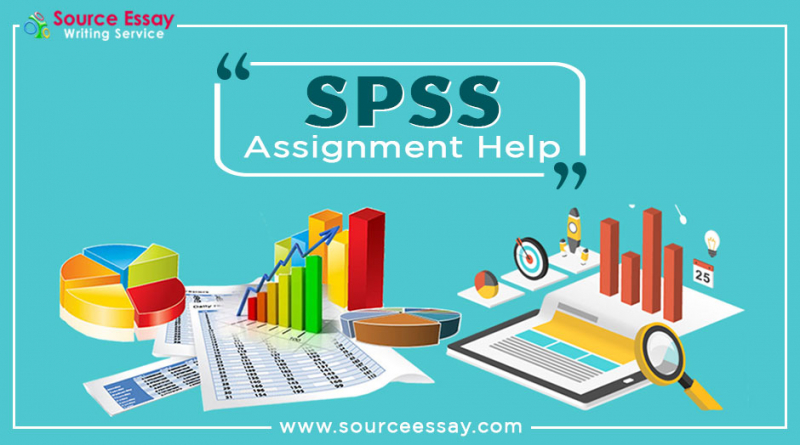
https://sourceessay.com/ 
https://www.passionateinmarketing.com/ -
What are your thoughts on statistics? Are you concerned that you will select the incorrect test? Or do you make a calculating error and misread your data? In a nutshell, do you have a fear of numbers? If that's the case, you've arrived to the correct place!
To undertake statistical studies, you do not need to understand sophisticated mathematical formulae, contrary to popular belief. There are only two things you need to learn. To begin, you must understand how to select the appropriate statistical test. Then, in order to draw inferences from your data, you'll need to know how to do analysis in computer software such as SPSS.
This course - SPSS Essentials: Statistics made easy - will teach you how to choose the best statistical test for your data and research technique by answering four easy questions about your data and research methodology. Then you'll learn how to use SPSS to automate the process. You'll learn how to open SPSS, enter data, and save the results. You'll then learn how to utilize SPSS to calculate descriptive statistics like mean, median, mode, and frequencies. Then you'll learn how to do inferential statistics including the t-test, correlation, Chi-square, ANOVA, and regression using SPSS.
The capacity to undertake quantitative data analysis is becoming a more valuable talent for researchers to have. Including these skills on your resume can increase your employability and give you the confidence you need to begin analyzing data right away.What you will learn
- Select the appropriate analysis for your data
- Learn how to use the SPSS application.
- Data should be entered into SPSS and saved.
- Choose the best data entry method for the type of information you have.
- Choose the right descriptive analysis technique for the data you've got and the questions you're trying to answer.
- Choose the right inferential analysis technique for the data you've got and the questions you're seeking to answer.
- Use SPSS to do the analyses.
- The data output should be interpreted.
Who this course is for
- If you are a student who is having trouble studying statistics or analyzing your dissertation data, this course is for you.
- This course is ideal for you if you work as a researcher who analyzes data for your company. If you're already working in quantitative research, developing new quantitative data analysis abilities will be beneficial. If you work in qualitative research, you'll need to broaden your skill set to include quantitative methodologies.
- Consultants working on quantitative data projects will find the information useful as well (e.g. usability tests, surveys and focus groups).
Requirements
- You will need your own licensed copy of SPSS.
Instructor: Tendayi Viki
Udemy rate: 4.6/5.0 (233 ratings)
Enroll here: https://www.udemy.com/course/spss-essentials/

https://www.quickbase.com/ 
https://www.istockphoto.com/ -
The next frontier of the twenty-first century is data. According to a Harvard Business Report (2012), data science will be the trendiest employment of the twenty-first century, and data analysts will have a promising future. This course is designed to give students the skills they need to independently conduct in-depth data analysis with professional confidence and accuracy. It will benefit anyone seeking to get business insights, comprehend consumer behavior, make objective plans for new businesses, conduct brand research, publish scholarly publications in high-impact journals, or complete high-quality thesis/project work. This is one of the best online SPSS courses.
A solid understanding of quantitative data analysis is required for academic and professional advancement. With this in mind, this course has been built so that students, researchers, teachers, and business employees who want to learn data analysis in a more in-depth and engaging way can do so using IBM SPSS Statistics.
After completing this course, you will be able to evaluate and treat data independently, as well as organize and carry out new research projects depending on your research interests. In the most thorough, in-depth, and step-by-step manner, the course covers most of the primary types of research procedures used in academic and professional research.The present training session will focus on assisting participants in developing statistical skills by allowing them to explore SPSS and its various choices. The emphasis will be on building practical abilities in data analysis, as well as establishing an independent capacity to accurately choose which statistical tests are appropriate for a given research purpose. The program will also teach how to format the SPSS results in APA format.
What you will learn
- With SPSS, you may confidently analyze any type of numerical data.
- Create your own research study from the ground up.
- Recognize the study methodology and findings given in high-quality journal publications.
- Perform reliable data analysis and deliver the results in a standard way.
Who this course is for
- PhD students and researchers who want to learn SPSS and publish in high-impact journals should take this course.
- Professionals seeking for a job in the business sector that are interested in analytics
- Faculty who want to learn SPSS and improve their data analysis skills
Requirements
- Because the course is designed from the ground up, no prior experience with SPSS or statistics is required.
- To practice the steps covered in this course, students will need a copy of SPSS software.
Instructor: Scholarsight Learning
Udemy rate: 4.4/5.0 (5,117 ratings)
Enroll here: https://www.udemy.com/course/spss-statistics-foundation-course-from-scratch-to-advanced/

https://fitsmallbusiness.com/ 
https://www.istockphoto.com/ -
If you want to test a complicated structural model, you already know how important AMOS is. It is a powerful and widely used tool for Structural Equation Modelling.
If you are a researcher, you will not have a thorough understanding of research unless you have mastered the SEM, as the vast majority of studies are progressively using SEM. You can use SEM to refer to the instructor's published research papers:
- Sanjay Singh & Yogita Aggarwal (2017). Happiness at Work Scale: Construction and psychometric validation of a measure using mixed method approach. Journal of Happiness Studies. doi:10.1007/s10902-017-9882-x. Springer
- Sanjay Singh & Yogita Aggarwal (2017). Antecedents and consequences of work significance in Indian organizations. Journal Management, Spirituality and Religion. doi: 10.1080/14766086.2017.1320580. Taylor & Francis
This course will teach you how to do SEM from the ground up using AMOS. AMOS is a robust confirmatory validation method that is frequently utilized by academics and psychometricians for high-impact research and publishing. It allows you to define, estimate, evaluate, and present models to demonstrate hypothesized relationships between variables. AMOS software allows you to develop and test complicated models more precisely and quickly than traditional multivariate statistics techniques.
What you will learn
- Using AMOS, perform a confirmatory analysis.
- Using AMOS, determine the scale's reliability and validity.
- AMOS is used to perform structural equation modeling.
- Analyze complex route models and extrapolate knowledge from multivariate data.
Who this course is for
- Researchers and PhD students
- Anyone looking to master SEM using AMOS
- Data Analysts
- Psychometricians
- Professors
- Research Methodologists
- Social Scientists
Requirements
- There are no requirements. All you need is an AMOS-enabled PC. It would be beneficial to have a basic understanding of statistics and SPSS.
Instructor: Scholarsight Learning
Udemy rate: 4.2/5.0 (951 ratings)
Enroll here: https://www.udemy.com/course/sem-using-amos/

https://unsplash.com/ 
https://www.istockphoto.com/ -
This specialization - Survey Data Collection and Analytics - covers the principles of surveys as they are applied in market research, evaluation research, social science and political research, official government statistics, and a variety of other areas. You'll master the fundamentals of questionnaire design, data collection methods, sampling design, coping with missing values, producing estimates, merging data from various sources, and survey data analysis throughout the course of six sessions. By analyzing and comparing numerous data sources in the final Capstone Project, you'll put the skills you've learned throughout the specialty to use.
The Michigan Program in Survey Methodology and the Joint Program in Survey Methodology, a collaboration between the University of Maryland, the University of Michigan, and the data collection firm Westat, were established by the National Science Foundation and the Interagency Consortium of Statistical Policy in the United States to educate the next generation of survey researchers, statisticians, and methodologists. The instructors also offer short courses, a summer school, certifications, master's degrees, and PhD programs in addition to this focus.
Skills you will gain
- Data Collection
- Cluster Sampling
- R Programming
- Missing Data
Instructor: Frauke Kreuter, Ph.D. and 4 more instructors
Coursera rate: 4.3/5.0, 747 ratings
Offered by: University of Maryland, College and University of Michigan
Enroll here: https://www.coursera.org/specializations/data-collection

https://soulpageit.com/ 
https://www.arco.be/ -
Many people, for good reason, find data analysis challenging. Because data analysis is not a single field, it is tough. It is multi-disciplinary, which implies that it necessitates the integration of information from several domains in order to be completed properly. To undertake data analysis for your research, you will need:
- Knowledge in the data analysis software (e.g. SPSS, Excel, R, etc.)
- Knowledge in statistics concepts
- Knowledge in research methods
- Experience and skills working with data
This course is intended to be brief and useful. This course will not aim to teach you everything there is to know about statistics, SPSS, data analysis, and research since it would be needlessly difficult. Instead, this course will walk you through the essential information and abilities you'll need to evaluate your own data in a disciplined and practical manner. This course will not turn you into a statistician or an expert in SPSS, data analysis, or research, but it will assist you in completing your own data analysis. This is one of the best online SPSS courses.
This is to be achieved by the following:- Knowledge of the past Each segment of the course starts with a quick overview of the most important statistics principles.
- Demonstrations in the field Every video is based on a real-life scenario. These jobs were hand-picked from a list of the most common types of analysis you're likely to perform.
- Sharing of knowledge Aside from statistics and SPSS, the instructors also provide a lot of their own research and data analysis experience, including how to cope with the most common data challenges, prevent common misunderstandings, and get around some frustrating flaws in SPSS.
- Points to consider. The most important aspects are underlined throughout the video and recapped at the end.
- Exercise. At the end of each segment, there is an exercise. This allows you to put what you've learned in the previous lessons into practice. There are also inquiries that make you think about what you're doing more deeply. A second video is dedicated to demonstrating the answers to these exercise issues, which is suitable.
- References.
What you will learn
- Explain the fundamentals of statistics as well as the many degrees of data measurement.
- Determine the right data analysis procedures for a certain type of data.
- Prepare the data for analysis by cleaning and preparing it.
- Apply standard statistical analysis on the data.
- The findings of hypothesis testing should be reported in the proper format.
- Avoid some of the most typical data analysis blunders.
- Have the knowledge and abilities necessary to examine your own study data.
Who this course is for
- Students who are having difficulty with their research papers or dissertations should seek assistance.
- Researchers with a non-technical background who are just getting started
- Anyone interested in data analysis
Requirements
- Because this is a course for new researchers, minimal prior experience of statistics, data analysis, or SPSS is anticipated.
- A copy of SPSS should be available to the student (version 20 or later recommended).
Instructor: Dr. Haoran Zhang
Udemy rate: 4.1/5.0 (195 ratings)Enroll here: https://www.udemy.com/course/spss-data-analysis-for-beginning-researchers/

https://www.istockphoto.com/ 
https://iran-bssc.ir/











